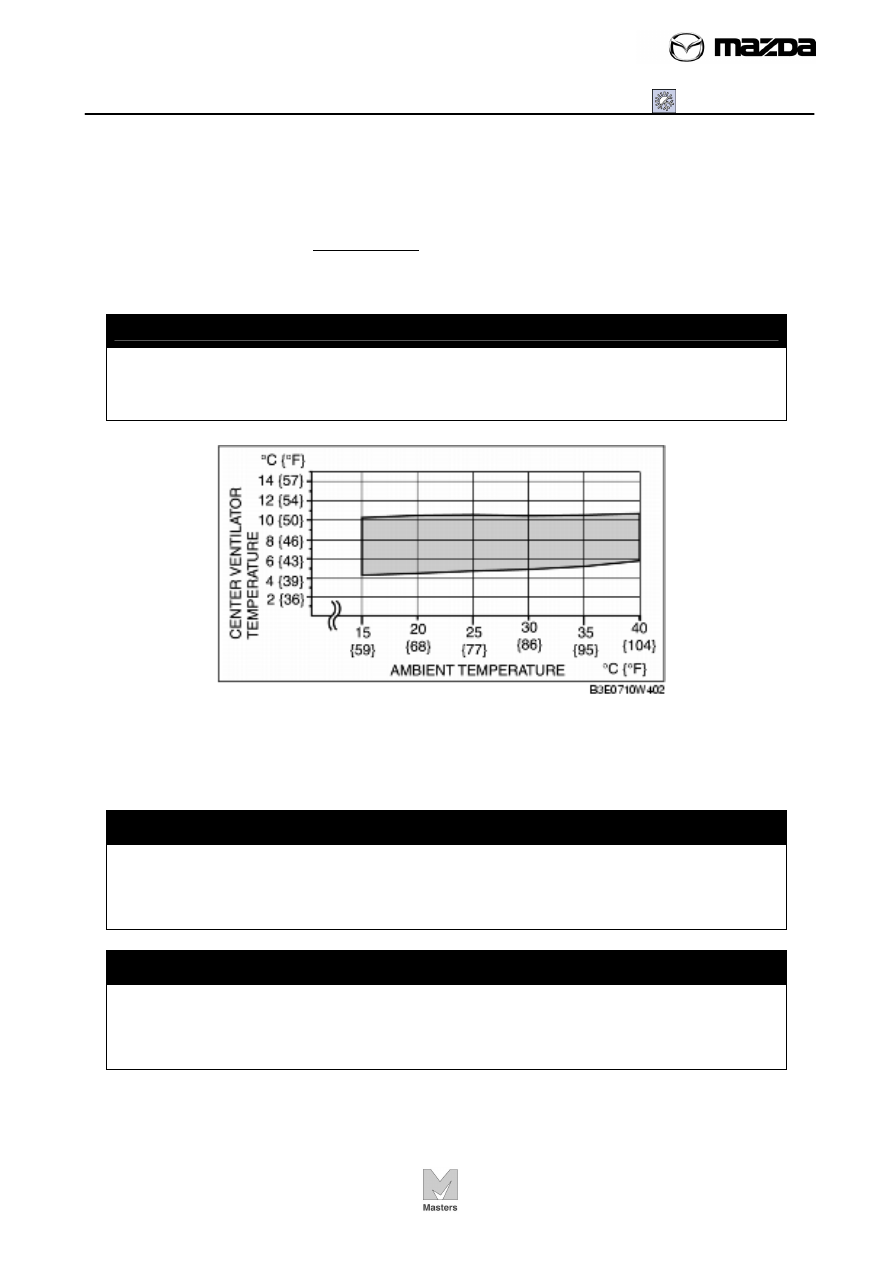Mazda Training manual - part 286

AIR CONDITIONING
03 - Conducting a Performance Check
SG03-4
TC070-15-01H
4. Start engine and hold at 1,500 rpm.
5. After the blower air is stabilized, read the dry-bulb thermometer.
Dry-bulb temperature °C
6. Verify that the temperature reading is in the shaded zone.
INFORMATION POINT
Stabilized refrigerant pressures occur when maximum high side pressure remains
the same each time the compressor cycle off. This pressure should not vary with
the cycles.
(If the pressure reading is out of the specification, inspect the refrigerant system
according to the troubleshooting chart in the Workshop Manual.)
NOTE
It is acceptable for outlet temperatures to be cooler than the specification. If you
perform the test in an air-conditioned shop, your reading will not match the
temperature/humidity zone charts.
KEY POINT
Because of individual comfort zones, customer perception of air conditioning
performance varies. The customer may not understand the effect of humidity, solar
gain, vehicle color, and glass area on vehicle cooling.
Use this performance check to confirm that a customer’s A/C system is operating to
manufacturer’s specifications. This check also helps guide you towards the problem
during diagnosis.